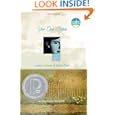When Abigail Jones begins to see the effects of working too hard for her family’s failing magazine, she relents to her mother’s request to take a break and heads to the middle of nowhere Montana to visit her Aunt Lucy. Bored after a few days, Abigail takes a job as a nanny for a young girl named Maddy, whose father is a handsome rancher. Although Abigail feels an attraction to Wade, his past keeps them apart. After coming across a secret from his past, Abigail must decide whether to use that secret to save her family’s magazine, which is closing its doors after this last edition or keep the secret of the man she is coming to love.
This book is a great read. Characters are very important for me as a reader. I’ll read anything if I like the characters, and the characters in this book are well-developed and likeable. I would like to see what happens with Dylan, who is Wade’s best friend and somewhat of a player, and I hope Denise Hunter writes his story next! I recommend this book to Christian fiction fans.
I received this book from Booksneeze for the purpose of reviewing.
This book is a great read. Characters are very important for me as a reader. I’ll read anything if I like the characters, and the characters in this book are well-developed and likeable. I would like to see what happens with Dylan, who is Wade’s best friend and somewhat of a player, and I hope Denise Hunter writes his story next! I recommend this book to Christian fiction fans.
I received this book from Booksneeze for the purpose of reviewing.










